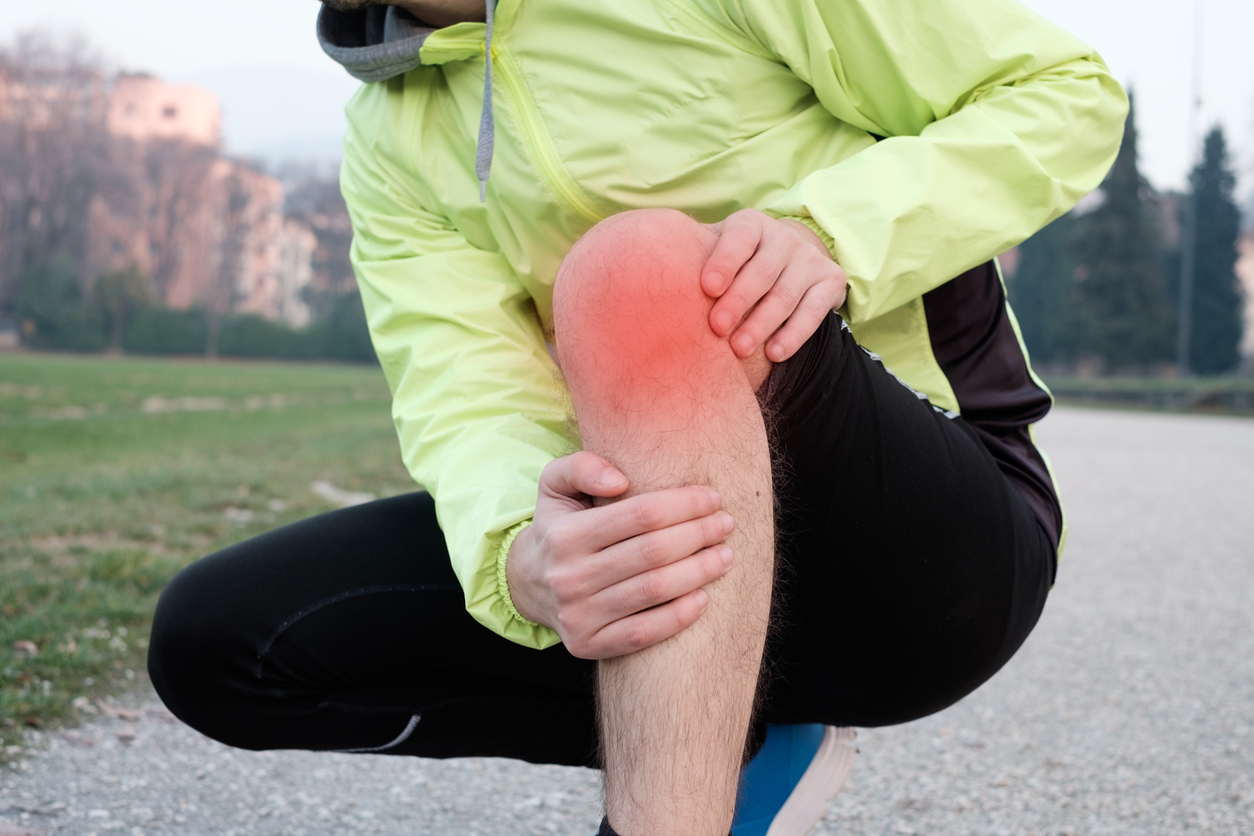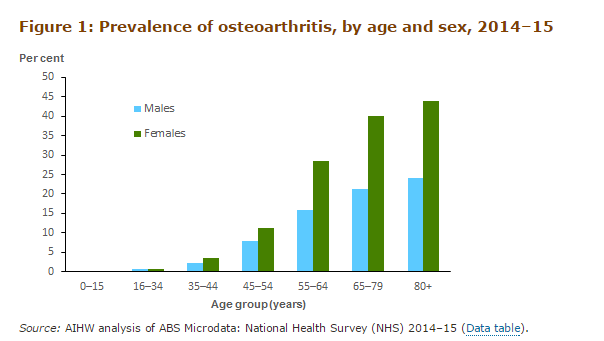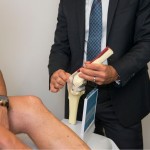
Arthritis affects many people, but in particular Osteoarthritis or OA, otherwise known as “wear and tear arthritis” is a chronic disease that most commonly occurs as we age.
For anyone who suffers from arthritis, the wet weather and the colder winter months can prove difficult and make it harder to manage the symptoms of OA.
Who gets OA?
Although many retired elite athletes and active sports people suffer with arthritis at an earlier age due to the extra strain and trauma that has been placed upon their joints, OA is listed in the top 5 chronic diseases affecting Australians.
Data taken by the ABS in 2014 – 2015 as part of a National Health Survey identified that about 9% of our population have OA; that it is more common in females than males; and that the incidence of OA rises sharply after the age of 45.

Why does the wet and cold affect OA sufferers?
There has been a lot of research around what causes OA covering everything from changes in barometric pressure to people going into “hibernation” mode and stopping exercise. There is no definitive answer, but the one fact that stands out is that all sufferers from OA say their pain and symptoms increase and are harder to manage in colder weather.
So – if you have OA, what can you do to help winter prevent aches and pains?
Tip 1 – Dress warmly
One of the easiest things to do is to make sure you dress warmly, although it can be harder if you are engaged in active, manual, or outdoor work or activities. Remember to pay special attention to the head, hands and feet. Why? Keeping warm will help keep the pain away and we lose the majority of heat through our extremities. Wear layers as they trap body heat, if possible, wear gloves for your hands, a hat and a scarf as well as warm socks and try to avoid getting your feet wet or damp.
Tip 2 – Don’t stop exercising
Exercise is one of the best things to do to ease arthritic pain. It also increases our strength and flexibility as well as reducing joint pain. You don’t need to be out running the paddock – but ensuring you do some regular exercise that is easy to undertake will help manage your arthritis. Try:
- Walking indoors –large spaces like shopping centres (ladies – just ignore the sale signs!)
- Gentle aerobics or yoga classes
- Dancing
- Use the stairs instead of the lift
- Stretch or perform some light exercises while watching TV
- Just add water: warm water is very beneficial to OA – try aquarobics or swimming in a heated pool
Tip 3 – Hot and cold therapy
Hot and cold treatments have proven to be very beneficial in managing arthritis pain. Take long warm showers and baths to help ease your joint stiffness. Hot packs are also very useful.
Tip 4 – Diet
There has been a lot of research around food items that can help fight inflammation (which causes OA.) The following foods have been found to be beneficial. Try adding fish to your diet on a regular basis. Fish rich in omega-3 fatty acids such as salmon, tuna, trout and mackerel are ideal – and don’t forget your veges! Broccoli, Brussel sprouts, cabbage, kale and cauliflower are all recommended.
Tip 5- Lose Weight
Carrying extra weight puts extra stress on our hip and knee joints. Just losing 5 – 10 kilos will make a significant difference in managing the pain and symptoms of OA. There are many assisted weight loss programs available, speak to your GP and see if they are able to give you some guidance as to what might work for you and your lifestyle.
Are there other medicines or treatment options available to reduce arthritic pain?
Yes there are.
- Paracetamol can help relieve pain.
- Nonsteroidal anti-inflammatory drugs can be used to reduce pain, swelling, and fever.
- You can have steroid shots in the joint to reduce swelling
Can OA be healed naturally?
Unfortunately no. As it is a degenerative chronic disease OA can’t be “healed” as such and at some point the disease will deteriorate the joint to “bone on bone”. When this occurs, your doctor will likely recommend a joint replacement.
Hip and knee joint replacements are one of the most successful surgeries performed worldwide and have given many people the ability to continue to live a rich and independent life.
If you would like to learn more about what stage your arthritis is, if you are seeking further information on managing OA or would like to find out more about knee replacement or hip replacement surgery, please visit the Conditions section of our website www.drlouisshidiak.com.au or arrange for a consultation. I’ll be happy to talk to you and see how we can help relieve your pain and restore you back to an active life.


